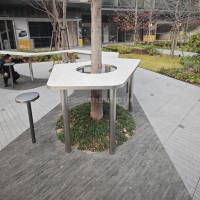Welcome to the website for landscape facilities products and knowledge.
How does the design of the trash can base prevent sinking or instability on soft ground?
The design of a trash can base plays a crucial role in preventing sinking or instability on soft ground. Engineers incorporate several key features to ensure durability and performance.
1. Wide Footing: A broader base distributes the weight of the trash can evenly, reducing pressure on any single point and minimizing the risk of sinking into soft soil.
2. Reinforced Materials: High-density plastics or metal reinforcements in the base enhance structural integrity, preventing deformation under heavy loads.
3. Anti-Slip Pads or Spikes: Some designs include rubberized pads or small spikes to grip the ground, improving traction and preventing lateral movement.
4. Elevated Design: Raising the base slightly above the ground allows for better airflow and drainage, reducing moisture buildup that could weaken the soil.
5. Weight Distribution Channels: Internal ribbing or grooves in the base help direct weight outward, further stabilizing the trash can on uneven or soft surfaces.
These innovations ensure that trash cans remain stable and functional, even in challenging environments like grass, mud, or loose soil.
Related search:

Recommendation
An outdoor bar counter with stainless steel and terrazzo materials in an irregular shape